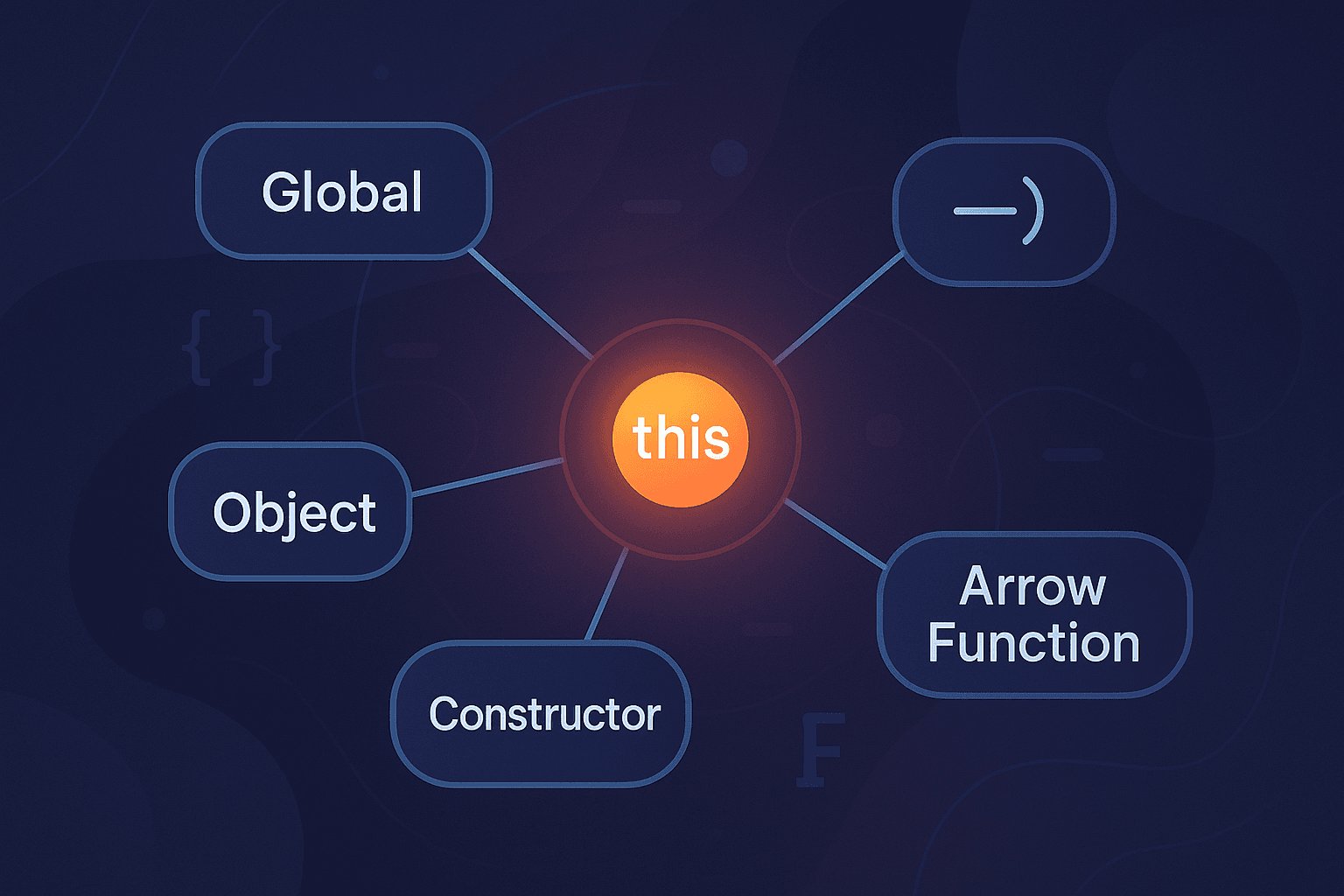The this keyword in JavaScript refers to the execution context of the code in which it is used. Its value is determined by how a function is called, not where it is defined. It typically refers to the object that is executing the current piece of code.
- Understand how
thischanges based on where and how your function is called. - Learn the difference between
thisin regular functions, arrow functions, and object methods. - Avoid common mistakes by knowing how context shifts in callbacks, events, and constructors.
- Apply call, apply, and bind to control
thisfor cleaner, more predictable JavaScript code.

